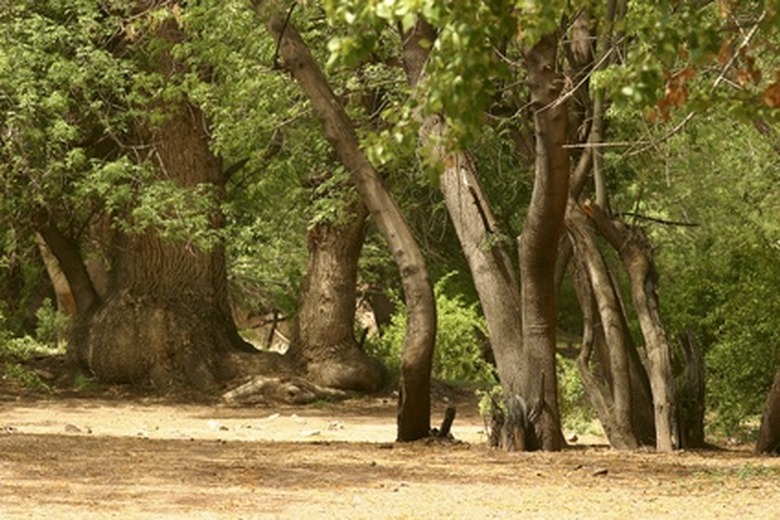Arizona Ash Tree Lifespan
The Arizona ash tree has several common names: velvet ash, Modesto ash, leather leaf ash, smooth ash, Tumi ash, Fresno and Standley ash. It is a fast-growing deciduous tree native to North America, reaching heights and widths of up to 30 feet. The Arizona ash is hardy in USDA zones 7 and 8.
Life Expectancy
Generally the Arizona ash has a life expectancy of approximately 20 to 30 years. Its life expectancy is directly related to its structural integrity. The poor structural integrity is due to the many upright trunks that the tree develops.
The trunks all stem from the main trunk, and they all originate from the same location on the main trunk, which makes the tree weak. The weakening of the tree then leads to a shorter life expectancy; instead of living from 20 to 30 years it may only live from about 15 to 20 years.
- The Arizona ash tree has several common names: velvet ash, Modesto ash, leather leaf ash, smooth ash, Tumi ash, Fresno and Standley ash.
- Generally the Arizona ash has a life expectancy of approximately 20 to 30 years.
On the other hand, if the tree is maintained well through pruning, and you have used braces or cables to support any branches that are showing signs of stress, weakness or overload, the Arizona ash tree can have a life expectancy of up to 50 years.
Limb Failure
When a tree has several trunks growing out of the same point on the main trunk, it creates a stress point due to the heaviness of the limbs and branches. This stress and weight creates a weak point in the tree, and can cause limb failure/limb breakage. What happens is that these limbs begin to break at that point of stress/overload.
Once a limb breaks off the site of the break begins to decay, and this makes the tree even weaker. When main limbs are lost, the canopy or crown of the tree is diminished due to the loss of branches–the tree is no longer aesthetically pleasing, and it no longer provides the shade that it once did.
Pruning
In order to maintain the integrity of the tree, the Arizona ash will need to be pruned during the first 15 years of its life. As the tree grows pay attention to its branch structure, pruning away any crossover branches, and weak or multiple trunks as they develop. When purchasing an Arizona ash look for a tree that has a single leader. Do not purchase a tree that has multiple trunks.
- On the other hand, if the tree is maintained well through pruning, and you have used braces or cables to support any branches that are showing signs of stress, weakness or overload, the Arizona ash tree can have a life expectancy of up to 50 years.
- This stress and weight creates a weak point in the tree, and can cause limb failure/limb breakage.
Pests
The Arizona ash is also susceptible to borers. Borers are actually beetle larvae that enter the vascular system of the ash tree to feed. Once they have entered the tree there really isn't much that you can do about it. They usually attack weakened trees, so it is important to maintain your tree well through watering, and fertilization. Borers will kill a tree, thus ending the possibility of a long lifespan.
Disease
Verticillium wilt is a systemic disease caused by a soil-borne fungus, that attacks a variety of trees and shrubs (there are also many species that are immune to the disease such as honeylocust, hickory, oak, sycamore, and walnut to name a few). The Arizona ash is susceptible to this disease – and is yet another factor that can lower its life expectancy.
- The Arizona ash is also susceptible to borers.
- Verticillium wilt is a systemic disease caused by a soil-borne fungus, that attacks a variety of trees and shrubs (there are also many species that are immune to the disease such as honeylocust, hickory, oak, sycamore, and walnut to name a few).
Verticillium wilt can strike anytime during the growing season; however it usually appears in July and August. Leaves will show signs of scorch, some may turn yellow in color. You may also see branches die back, and also partial defoliation. A severe case of verticillium will kill the tree. There is nothing that you can do to save an infected tree– fungicides do not cure the disease.
